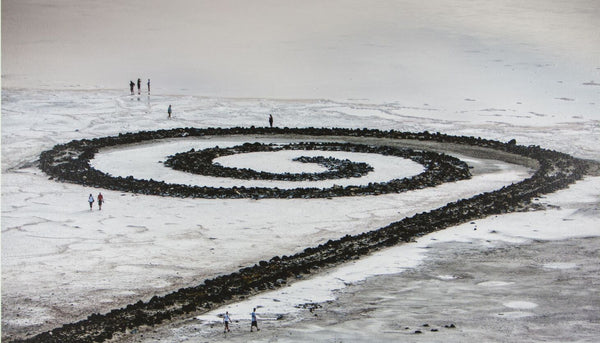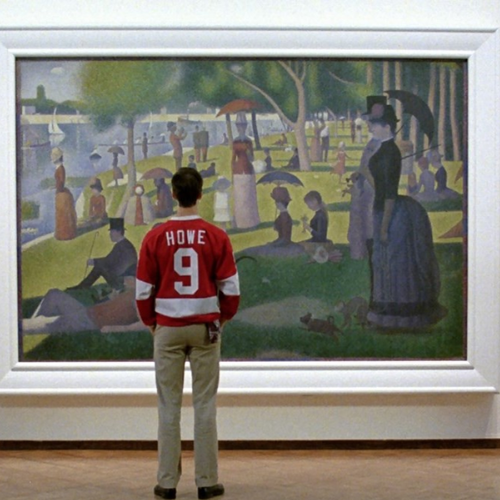
What is modern art?
Beyond characterizing the movement by dates alone, modern art refers to a major change in the history of art that heralded a turn away from the traditions of the academy and a movement toward experimental modes of representation. Rather than seeking to capture the world in the most true to life way, with accurate perspective, color, scale and light, modern artists sought to imbue their canvases and sculptures with their own unique points-of-view, feelings and techniques. No longer bound by the parameters of only depicting reality, modern artists explored their own consciousness to create works that captured the human condition, the beauty of the natural world and the boundless creativity of their own imaginations.Origins & influences of modern art

Characteristics of modern art
Given its wide variety of influences and sweeping time period, modern artwork cannot be described in any singular terms or characteristics. Rather, specific movements heralded by several specific artists best describe modern art’s many defining characteristics.Many art historians name Paul Cézanne as the father of modern art. The famous Post-Impressionist painter clearly illustrated how artists could break free from the rigid strictures that had previously defined art history by actually co-opting one of the most traditional genres—the still life. Cézanne’s most notable subject, a basket of apples, nodded to the long tradition of the still life that came before. His technique, however, accounted for a complete break from tradition. His compositions defied the laws of perspective and color, rendering space in a completely unique way. This groundbreaking approach greatly influenced following movements like Cubism and even Surrealism.

Later movements include Abstract Expressionism, led by luminaries like Jackson Pollock and Helen Frankenthaler. These movements prioritized process just as much as the final product. Pollack’s gestural flinging of paint onto monumental canvases and Frankenthaler’s immersive abstractions of completely saturated canvases soaked with amorphous fields of paint married fine art with performance in a way that inspired many later artists.


Pop art emerged in the 1950s and 1960s as a counterpoint to the painterly abstraction of other modern artists. Pop art returned to representational compositions and utilized decisive edges and forms that drew inspiration from commercial and popular culture. Artists like Roy Lichtenstein and Andy Warhol led the way, creating unique, sometimes tongue-in-cheek works that provided rich commentary on the increasing commoditization of modern society.

While Warhol experimented with creating multiples in his famous shop, other late modern artists looked toward monumental projects like land art. Perhaps the most famous example, sculptor Robert Smithson created the Spiral Jetty—a spiraling earth work that protruded out into Utah’s Great Salt Lake in 1970. Smithson’s work was elusive and mysterious, accessible to only those who knew of its existence. Part performance piece, part disruptive statement, this piece of land art can help mark the shift from the modern art era to the contemporary era.

What is contemporary art?
Contemporary art is sometimes more difficult to define. While most say contemporary art is art made by artists living today, some of the most famous contemporary artists of the last 50 years are no longer living—some due to the contemporary issues that their art commented on. Contemporary art reflects the world we live in today. Though many contemporary artists directly make reference to the canonical works of art history, their work is unbound by any structures or traditions. They create across mediums, making works monumental and small, tangible and intangible, installation and video, sculptural and flat.Characteristics of contemporary art
Some of today’s most famous contemporary artists include Yayoi Kusama, Jeff Koons, Kehinde Wiley, Kara Walker, Zeng Fanzhi and Julie Mehretu, to name a few.
Yayoi Kusama’s works defy categorization. She creates immersive artworks of polka-dot covered rooms and infinity mirrors that transport those who experience her works to a different dimension.

Jeff Koons’ famous balloon animals produced in stainless steel with mirror-finish surfaces sharply divide contemporary critics. One art critic might view his work as pioneering and of major art-historical importance while another may dismiss his work as kitsch and based on cynical self-merchandising. The American contemporary artist himself has stated that there are no hidden meanings and critiques in his works of contemporary sculpture—though this statement itself could be part of the ruse.


Other contemporary artists engage directly with the canon of art history to make important statements about today. Though perhaps best known for painting the official Presidential portrait of Barack Obama, artist Kehinde Wiley has amassed an impressive body of work throughout his career. Wiley draws heavily on canonical works, with his most quintessential pieces working in a large scale to recast Old Master paintings with contemporary Black models in a stylized interrogation of the historical legacy of fine art. Wiley’s body of work creates a sort of revisionist history that places Black people at the center of the narrative. His desire comes from personal experience, roaming the halls of museums like the Huntington Library and wondering aloud, “Where are the people who happen to look like me?” Spurred by this feeling, Wiley developed what he described as an obsession with the, “incredibly ancient language which is easel painting. This obsession with the dignity of it. The bombast. The pomp and circumstance surrounding all of these portraits.” Wiley thought “Perhaps I can hack that language of dignity. Hack that language of respectability and turn that light towards people who happen to look like me.” As a portraiture artist, Wiley reimagines a history that paints these figures as the dignified subjects of monumental compositions. Wiley’s world-building through paint envisions racial equality then and now.
While some purists count contemporary artwork as art created by “living" artists," we would be remiss not to include artists like Jean-Michel Basquiat or Félix González-Torres in the conversation about contemporary art—as their work remains so critical to the movement’s central concepts. Both died young, Basquiat in 1988 at age 27 to drugs, González-Torres in 1996 at age 38 to AIDS. Basquiat was a one-of-a-kind artist and connoisseur of cool. A Neo-expressionist who utilized graffiti and paint with the same reverence, Basquiat created a visual language that fed a cult of celebrity around him. His work commented on culture and Blackness, the fragility of life and ongoing colonialism and racism. Preoccupied with fate and his own demise, Basquiat met an untimely death due to drugs at a young age, but his influence permeates contemporary art.

Félix González-Torres, known more simply as Félix, also made an indelible impact in his short time. A leader in installation-driven art, Félix’s works created heartbreaking commentary about the AIDS crisis. Though many of his works were untitled, works like his 1991 Untitled (Perfect Lovers), envision the horror of the AIDS crisis through two nondescript wall clocks placed side by side. A commentary on the brevity of life and the urgency of time, through the run of the installation’s display the two identical synchronized clocks will eventually fall out of sync, and one might stop entirely. Installation art like this feels deeply emotional despite utilizing such commonplace objects with little intervention by the artist. These installations embody just how far the bounds of contemporary art can push and encourage viewers to find artistic meaning in works that might not at first seem to align with our idea of what art is.








